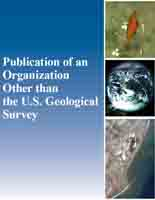Multiple methods for multiple futures: Integrating qualitative scenario planning and quantitative simulation modeling for natural resource decision making
Links
- More information: Publisher Index Page (via DOI)
- Data Release: USGS data release - Data from simulations of ecological and hydrologic response to climate change scenarios at Wind Cave National Park, South Dakota, 1901-2050
- Open Access Version: Publisher Index Page
- Download citation as: RIS | Dublin Core
Abstract
Scenario planning helps managers incorporate climate change into their natural resource decision making through a structured “what-if” process of identifying key uncertainties and potential impacts and responses. Although qualitative scenarios, in which ecosystem responses to climate change are derived via expert opinion, often suffice for managers to begin addressing climate change in their planning, this approach may face limits in resolving the responses of complex systems to altered climate conditions. In addition, this approach may fall short of the scientific credibility managers often require to take actions that differ from current practice. Quantitative simulation modeling of ecosystem response to climate conditions and management actions can provide this credibility, but its utility is limited unless the modeling addresses the most impactful and management-relevant uncertainties and incorporates realistic management actions. We use a case study to compare and contrast management implications derived from qualitative scenario narratives and from scenarios supported by quantitative simulations. We then describe an analytical framework that refines the case study’s integrated approach in order to improve applicability of results to management decisions. The case study illustrates the value of an integrated approach for identifying counterintuitive system dynamics, refining understanding of complex relationships, clarifying the magnitude and timing of changes, identifying and checking the validity of assumptions about resource responses to climate, and refining management directions. Our proposed analytical framework retains qualitative scenario planning as a core element because its participatory approach builds understanding for both managers and scientists, lays the groundwork to focus quantitative simulations on key system dynamics, and clarifies the challenges that subsequent decision making must address.
| Publication type | Article |
|---|---|
| Publication Subtype | Journal Article |
| Title | Multiple methods for multiple futures: Integrating qualitative scenario planning and quantitative simulation modeling for natural resource decision making |
| Series title | Climate Risk Management |
| DOI | 10.1016/j.crm.2017.07.002 |
| Volume | 17 |
| Year Published | 2017 |
| Language | English |
| Publisher | Elsevier |
| Contributing office(s) | Northern Prairie Wildlife Research Center |
| Description | 14 p. |
| First page | 78 |
| Last page | 91 |


